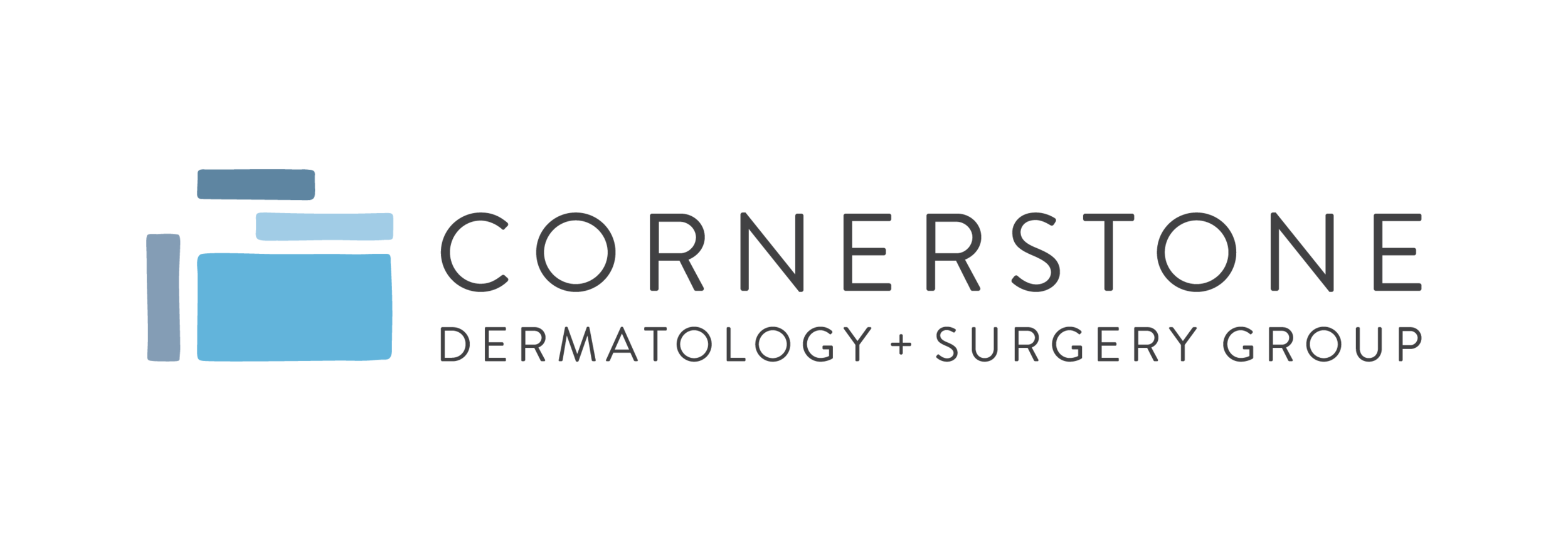Basal Cell Carcinoma: A Patient's Perspective in Skin Cancer Treatment
Dr. David Fieleke uses a dermatoscope to examine a patients skin, allowing him to view moles, skin tags and other skin lesions up-close and magnified.
Basal Cell Skin Cancer: Risk Factors and Diagnosis
When Dustin Steller made an appointment for a full-body skin check, the 38-year-old father of two wasn’t anticipating a skin cancer diagnosis.
But when David Fieleke, MD, double board-certified Dermatologist and Mohs Surgeon at Cornerstone Dermatology & Surgery Group spotted the nickel-sized pink spot above Steller’s left eyebrow, the patient says he was thankful he’d made an appointment.
“The thing that scared me was that spot didn’t really mean anything to me, but if I had let it go and found out three or four years from now, it could have been a much bigger problem,” Steller says. “It motivated me to tell my friends and family, people I care about. Stop putting off that appointment.”
When Steller’s biopsy results came back, Dr. Dr. Fieleke confirmed his diagnosis of basal cell carcinoma, the most common and easily treatable type of skin cancer (1).
Dermatologists diagnose millions of patients each year with basal cell carcinoma. Risk factors for skin cancer include UV exposure from sunlight and indoor tanning, ‘moley’ skin, a family history of skin cancer, and any previous skin cancers.
Basal Cell Skin Cancer Prevalence and Treatment
Basal cell skin cancer accounts for at least 32 percent of all cancers. (2) Of all non-melanoma skin cancers, about 80 percent are categorized as basal cell. (3) In the United States, about 35 percent of white males and 25 percent of white females will be diagnosed with basal cell skin cancer at some point in their lives. (3)
Surgical removal is typically the preferred treatment for basal cell skin cancer. (3) Other options include electrodesiccation and curettage, cryosurgery, topical chemotherapy, and photodynamic therapy. (4) In the rare cases in which distant spread has occurred, chemotherapy or targeted therapy may be used. (4)
For Steller, Dr. Fieleke recommended Mohs micrographic surgery, an advanced treatment for basal cell and squamous cell carcinoma. This in-office surgical procedure at Cornerstone Dermatology offers up to a 99 percent cure rate for these types of cancer.
Mohs is an ideal option for higher-risk skin cancers or for skin cancer in areas where there’s not as much surrounding skin or tissue – areas such as the face, ears, scalp and hands, Dr. Fieleke says.
“Mohs surgery allows us to take the smallest margin of tissue possible, sparing the most surrounding skin and offering patients the highest cure rate and best cosmetic result,” he says.
Two weeks after his diagnosis, Steller returned to Cornerstone for his procedure. Dr. Fieleke removed the visibly evident cancerous skin from his forehead.
With Mohs, the surgeon is also trained as the pathologist, so Dr. Fieleke examined the tissue under a microscope while Steller waited. If there had been any remaining skin cancer, he could have mapped out exactly where the residual tumor remained on the skin and only removed more skin in that specific location.
After microscopically evaluating Steller’s skin cancer, Dr. Fieleke returned and shared the good news – his patient was now cancer-free. For Steller, it felt as though a weight had been lifted in just over an hour’s time. Dr. Fieleke stitched him back up and the patient was on his way, looking forward to six-month follow-up skin checks after his brush with skin cancer.
While Caucasians and men older than 50 have the highest risk of developing melanoma and non-melanoma skin cancers, anyone can be affected, so it’s good to have a baseline full-body skin check, Dr. Fieleke says.
“There’s sometimes the mentality of ‘I’m too young for skin cancer,’ but with the prevalence of indoor tanning bed use within the past 20 years, it’s always better to be safe than sorry,” Dr. Fieleke says. “Both basal cell and squamous cell carcinoma are highly treatable when we catch them early.”
Our Care Philosophy
Dr. Fieleke opened Cornerstone Dermatology to care for Lee’s Summit and the surrounding communities in 2018. His mission in his practice is simple ‘We care for your skin, and we care for you.’
“When a patient leaves Cornerstone, we want them to feel they’ve received really exceptional dermatology care in a comfortable office setting,” he says. “You can trust us for all your skin health needs, from easily treatable conditions to those that require surgical intervention.”
Cornerstone Dermatology is currently accepting new patients and accepts a variety of insurance plans in our effort to provide you with the very best dermatology care.
To schedule an appointment, call (816) 287-1528 or email: hello@cornerstonedermatology.com
Sources:
Cakir BÖ, Adamson P, Cingi C (November 2012). "Epidemiology and economic burden of nonmelanoma skin cancer". Facial Plastic Surgery Clinics of North America. 20 (4): 419–22. doi:10.1016/j.fsc.2012.07.004. PMID 23084294.
Dubas LE, Ingraffea A (February 2013). "Nonmelanoma skin cancer". Facial Plastic Surgery Clinics of North America. 21 (1): 43–53. doi:10.1016/j.fsc.2012.10.003. PMID 23369588.
Gandhi SA, Kampp J (November 2015). "Skin Cancer Epidemiology, Detection, and Management". The Medical Clinics of North America. 99(6): 1323–35. doi:10.1016/j.mcna.2015.06.002. PMID 26476255
"Skin Cancer Treatment". National Cancer Institute. 21 June 2017. Archived from the original on 4 July 2017.


